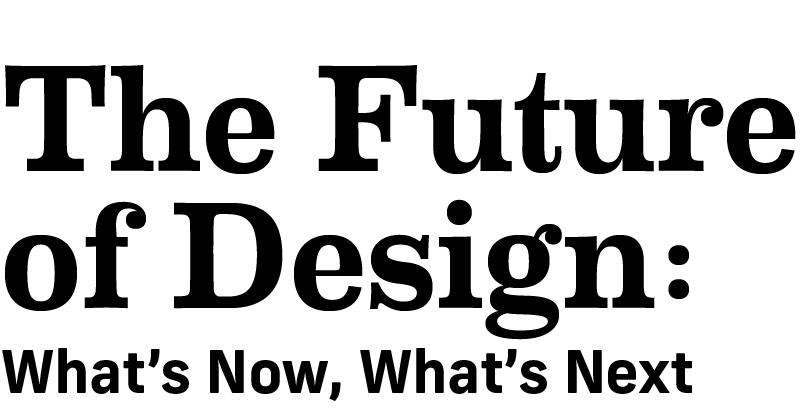At the heart of any senior living community are its residents. But that doesn’t always mean that those communities are designed with residents wholly in mind. There are always numerous pressures facing providers—particularly financial ones—that may influence choices when creating new built environments.
However, the scales are tipping in favor of person-inspired approaches, starting with scale itself, thanks to smaller, more homelike, and personalized environments that reflect and support the residents within, noted the jury of industry members who reviewed dozens of projects submitted to this year’s EFA Design Showcase.
“While some of the projects are quite large, you can see the design community working hard to create projects that address the individual, break down scale, and provide nicer private and public spaces with caregiver and resident input,” says Lori Wegman, principal of Wegman Design Group (Naples, Fla.).
It was that skirting away from decades-old approaches that often defined interiors, especially, with designs today taking into account who is using a space and how. “Solutions that are simply the application of finishes have been replaced by a variety of experiences for the occupants. I think we are finally getting to the point where person-centered spaces are a project priority, although the end result isn’t consistent,” adds Maria Lopez, principal of Maria Lopez Interiors (Stevenson, Md.).
While the empowerment of individuals was a common thread noted in terms of design goals, those inconsistent results that Lopez mentions were often attributed to one industry practice that hasn’t changed much: not inviting a diverse groups of stakeholders to weigh in on design.
“It still feels as though most of the projects we’re seeing are developed in a vacuum, where the only feedback the design team is seeking is that of the property owner, and maybe the staff. Collaboration with current residents, prospective customers, and the surrounding community is really limited. That, in turn, limits the potential of the project to be everything it could be in the community,” says CC Andrews, president and chief strategist at Quantum Age Collaborative (Cleveland).
But there were exceptions, most notably in this year’s four Award of Merit winners, among others.
“I think we are seeing an evolution of design intent and implementation as project teams work through project challenges together. It appears that the more planning time that is spent, the more successful the project is at completion,” Lopez says. “As project stakeholders come together collaboratively, they’re able to build consensus for what’s in the best interest of the project.”
Next big idea
Collaboration was among the innovations jurors saw emerge in projects reviewed this year, alongside projects that successfully navigated challenging construction sites or introduced funding models that allowed more affordable housing options. There were plenty of innovations jurors wished they’d seen, too.
“[Innovation] involves challenging ourselves as designers to think beyond the copy-and-paste scenario as well as challenging care providers to change their operations through design,” offers Jill Schroeder, senior interior designer at Pope Architects (St. Paul, Minn.). “Culture change is a huge aspect of innovation, and it’s no surprise that there’s a lot of resistance to this because of the training, education, and costs involved. When staff, residents, and families can be involved from the initial planning stages of a facility project, we can all work together to successfully implement culture change through design.”
Provider Lori Alford, chief operating officer of Avanti Senior Living (The Woodlands, Texas), noticed a lack of innovation in interior and exterior design, in particular. “We need to quit using plans and ideas from 15 years ago and expecting them to deliver a model that the customer wants today,” she says.
But when it comes to adopting new practices, some jurors noted that without research results, it’s tough to know what, if any, innovative approaches work. “Embellishing a space and improving the level of finishes can create an aesthetically impressive care model, but we continue to question whether the finishes impacted the residents’ quality of life,” Schroeder says. “For example, it’s not always clear that a beautifully designed, spacious dining room supports residents’ involvement in menu options.”
As for what industry members expect to define the next wave of new ideas, one word came up time and time again: technology.
Van Smith Jr., senior healthcare planner at KTH Architects Inc. (Orlando, Fla.), looks to mobile solutions to help caregivers disconnect from traditional workspaces and provide more continuous engagement with residents, while Lopez says technology solutions will reshape design approaches to give more control back to residents.
Tu-Anh Bui Johnson, project manager at Horty Elving + Wold (Minneapolis), agrees. “I am fascinated with how sensor or other wireless equipment can improve the quality of life for older adults. The next five to 10 years will be exciting to monitor how new technologies can inform the design of the future resident rooms and households,” she says.
At home
Among all the trends that were noted by jurors after reviewing this year’s crop of Showcase submissions, concepts of household models of care distinctly stood out as distinguishing what’s happening in senior living design today.
“It appears that the massive CCRC campuses are fading away, and the trends are leaning toward more intimate communities,” Alford says. Michael McKay, senior architect at Erdman (Madison, Wis.), adds, “The movement toward smaller households has clearly taken hold, and there continues to be much debate around the success and sustainability of this model within the industry. Some of the submissions seemed to grapple with this notion from a planning perspective,” he says.
Skip Gregory, president of Health Facility Consulting LLC (Tallahassee, Fla.), notes how some projects took the household concept and then pushed it further—such as Award of Merit winner Cottages at Hearthstone—by stepping away from large, institutional masses and instead creating separate buildings that resembled single-family homes. Some of these projects, he adds, successfully create a neighborhood feel, but others achieved a sense of suburban isolation instead.
Overall, though, BJ Miller, president of The Vision Group Studios (Asheville, N.C.), says the trend is indicative of a tipping point that’s been reached and a “race to replace the institutional double-loaded corridors of days past.” In fact, the neighborhood concept was apparent across models of care. “Even in large-scale projects, the plans indicate a concerted effort in breaking the care units into a variety of intimate neighborhood sizes, from 12 units to 22 units, depending on the skill level of the residents. Likewise in assisted living, instead of large, multistory apartment buildings, we see smaller-scale garden homes that are grouped together,” Schroeder says.
However, what jurors found particularly successful was when residential models were truly immersed in the community at large. Examples included sites that opened their doors to intergenerational uses via fitness facilities or public gathering spaces.
But, there were misses, too. “Far too often, the projects we look at are islands unto themselves, separate and even isolated from the surrounding community in which they’re located, and I’d like to see more examples of environments for aging that are fully integrated in the communities,” McKay says. He adds that that might be realized via close connections with everything from easy access to shopping and restaurants to museums and educational institutions, all with the goal of supporting a robust quality of life.
Horizon line
While progress was made on some fronts and stagnancy in design realized on others, the year of projects did serve as a reminder that the communities being created for seniors are improving. “While there are still pockets of old-school approaches and solutions, it’s clear that future elder care environments will be nothing like our grandparents’. I expect we’ll soon see very modern and urban solutions to new or reinvented communities,” Lopez says.
Part of realizing that future is challenging the past, notes Schroeder, who says designers must put themselves in the mindset of residents and their families to identify what will most positively affect their experiences. “We need to constantly challenge what our typical solutions would be. We need to challenge what our clients are asking of us, challenge limiting code restrictions, challenge typical products and materials, and, ultimately, challenge ourselves,” she says.
But jurors also returned to the argument for more research, both to bolster evidence for care models and approaches already in place and to provide backup for innovations just now entering the market.
“Overall, the project entries displayed a refreshing level of human sensitivity, with nature and intergenerational connections in abundance. Lacking, however, was a concerted effort to establish baseline metrics preconstruction with the intent of recording post-occupancy data tied to specific outcomes. This much-needed body of knowledge for elder environments is still a vacuum, and these are the caliber of projects that are ripe for research,” Miller says.
For Gregory, we’re still a ways away from the sea change some might like to see in senior living, but there’s plenty of good reason for the seemingly glacier-like speed with which change is realized. “All successful projects must meet certain and defined sets of goals for their design, construction, and economic viability,” he says.
Even though it’s slow going, Gregory sees the waves that are starting to break. “Although the future seems to change and evolve ever so slowly, we can still see changes being accepted into the mainstream of what’s considered viable senior design.”
Jennifer Kovacs Silvis is executive editor of Environments for Aging. She can be reached at [email protected].
For more EFA Design Showcase coverage, see the following:









